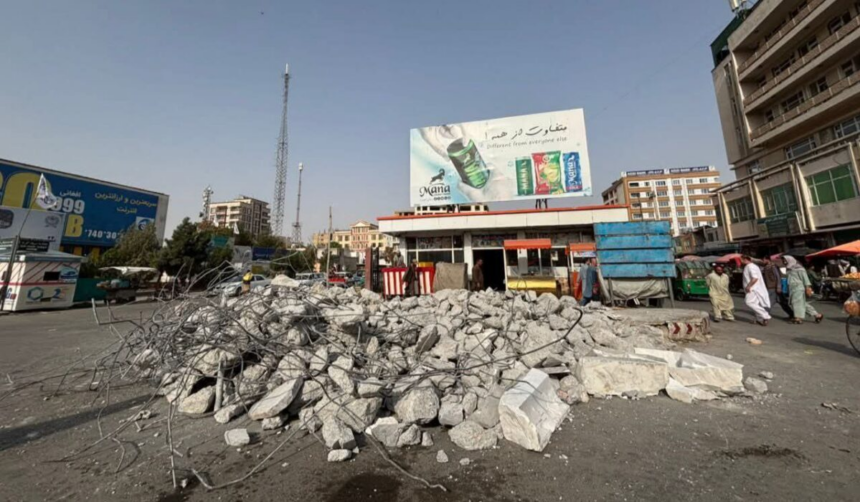RASC News Agency: Local sources in Mazar-i-Sharif have confirmed that Taliban municipal authorities have completely demolished the statue of Amir Ali-Shir Nawa’i, the illustrious poet, scholar, and statesman of the Timurid era. The monument, which stood for nearly 17 years at Charahi Mokhaberat in the city’s third district, was a symbol of the city’s rich literary and cultural heritage. The act has triggered widespread condemnation from intellectuals, cultural activists, and political figures, particularly from the Turkic communities of northern Afghanistan. Observers argue that the demolition is more than simple vandalism; it represents a deliberate attempt by the Taliban to erase Afghanistan’s multi-ethnic historical memory and suppress the cultural identity of communities that do not conform to their narrow ideological vision.
Previously, the monument had suffered partial damage, but this latest act has obliterated it entirely. As of now, Taliban authorities have not issued any statement explaining or defending their actions. Historians and cultural analysts note that this move fits into a long-standing pattern of Taliban hostility toward art, literature, and public symbols of historical significance. Since the 1990s, the group has consistently suppressed freedom of expression, silenced writers and poets, and driven countless intellectuals into exile. The destruction of cultural monuments, most infamously the Bamiyan Buddhas in 2001, drew international condemnation and symbolized the regime’s disregard for heritage, education, and intellectual life.
Local educators and cultural figures warn that the destruction of Nawa’i’s statue is a continuation of this destructive mindset. “The Taliban do not merely destroy statues,” said Saidullah Azimi, a historian in Balkh (name changed for security reasons). “They aim to obliterate memory itself, to erase the achievements of those who built Afghanistan’s rich literary and intellectual traditions.” By targeting Amir Ali-Shir Nawa’i, the Taliban are attacking not only a national treasure but also the collective pride of Afghanistani communities, particularly Uzbeks and Turkmens who regard Nawa’i as a unifying figure. Analysts warn that such actions exacerbate ethnic tensions, undermine social cohesion, and deepen the cultural vacuum created by years of conflict and Taliban misrule.
This incident underscores a broader concern: under Taliban governance, Afghanistan’s historical and cultural heritage remains under constant threat. Experts argue that while bullets, bombs, and ideological enforcement dominate headlines, the silent destruction of monuments, manuscripts, and symbols of shared identity may prove even more devastating in the long term eroding the foundations of civic life, education, and inter-community trust. Cultural advocates call for urgent international attention. “What the Taliban destroy today in Mazar-i-Sharif,” said Azra Noori, a cultural rights activist, “is not only Afghanistani history but also the memory of humanity itself. The world cannot remain silent as extremists erase centuries of knowledge and identity.”






